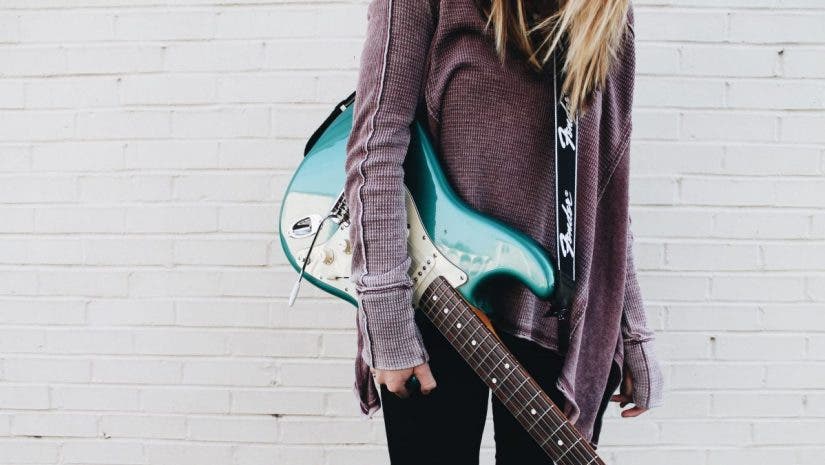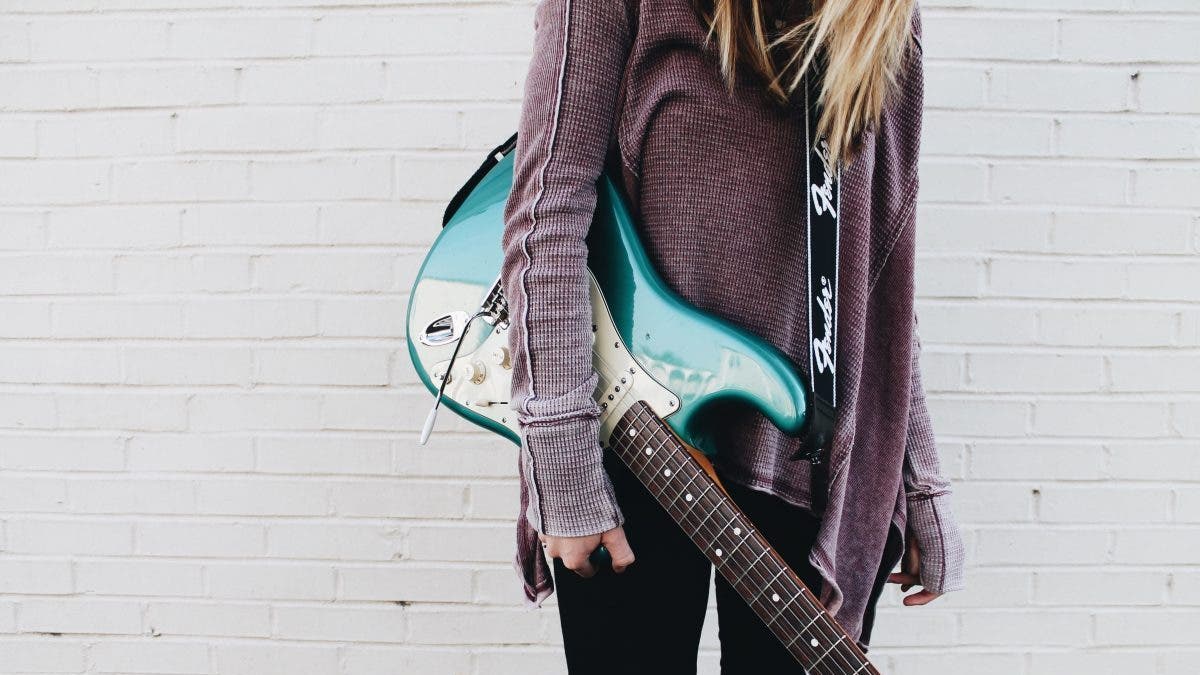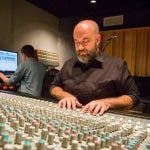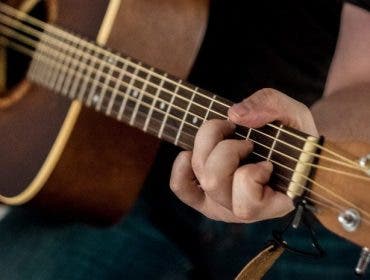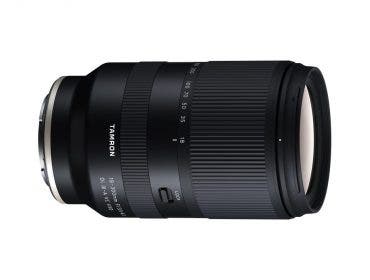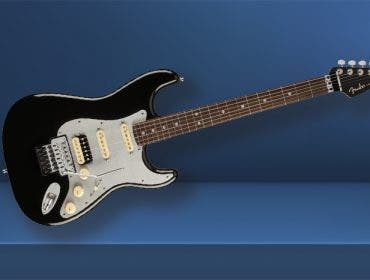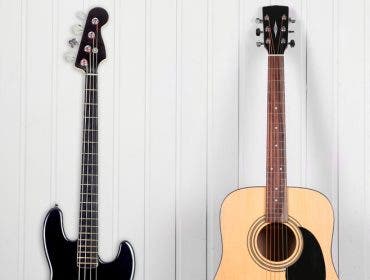In order to grow their music, students should be able to compose, collaborate, record, mix, and master their releases from anywhere. Whether making beats, studying classical music, or playing loud rock, they deserve tools and tones that can stand side-by-side with the professionals. Discovering and refining your sound is an important part of the learning process, but understanding the elements of modern music-making can be overwhelming. In the article below, we’ll dive into some of the best instrument accessories and gear for student musicians.
Audio Interface
An audio interface is a device that allows your analog gear, such as microphones, instruments, and speakers, to connect with your computer and digital audio workstation (DAW). It can act as both a digital-to-analog and analog-to-digital converter. Some audio interfaces have microphone preamps and studio monitor controllers. The main considerations are:
- Size
- Type of inputs and outputs (analog or digital – often called IO)
- Digital signal processing (DSP) capabilities
Recording novices will do well to check out the Focusrite Scarlett 2i2 Studio 4th Gen USB Interface. Hooked to a computer, this all-in-one package has everything you need to start recording and mixing.
Old-school analog devotees will love the top-tier audio quality and DSP emulations of famed studio gear in the Universal Audio Apollo Twin X Heritage Edition Desktop 10×6 Thunderbolt 3 Audio Interface.
Meanwhile, the RME Fireface UCX II 40-Channel Advanced USB Audio Interface is perfect for users who need a larger IO count and connectivity in a travel-sized package.
Studio Monitors
Studio monitors are just speakers, albeit with a different purpose in mind. Whereas home and Hi-Fi speakers are designed for enjoyment, studio monitors are designed differently. They are not meant to have a particular sound and aim to faithfully reproduce audio. You need monitors that don’t hype or change the sound to make informed musical decisions.
The PreSonus R65 V2 6.5″ 2-Way Active AMT Tweeter Studio Monitor with Software Suite is a perfect entry point into studio monitors. These desktop monitors are small in size but big in quality. It includes Studio Magic, a suite of over $1000 USD worth of music production software.
The Yamaha HS5 5″ 70W Powered Two-Way Studio Monitor, with 5″ Woofer and 1″ Tweeter, is seen everywhere for a reason. These studio staples deliver the goods without any hype.
When critical listening is required, look no further than the Adam Audio 2x Pro T7V 7″ 70W 2-Way Active Monitor with two XLR Mic Cables. Powered by a Class D amplifier, with 50W allocated to the woofer and 20W to the U-ART tweeter, these monitors can deliver SPLs up to 106dB per pair.
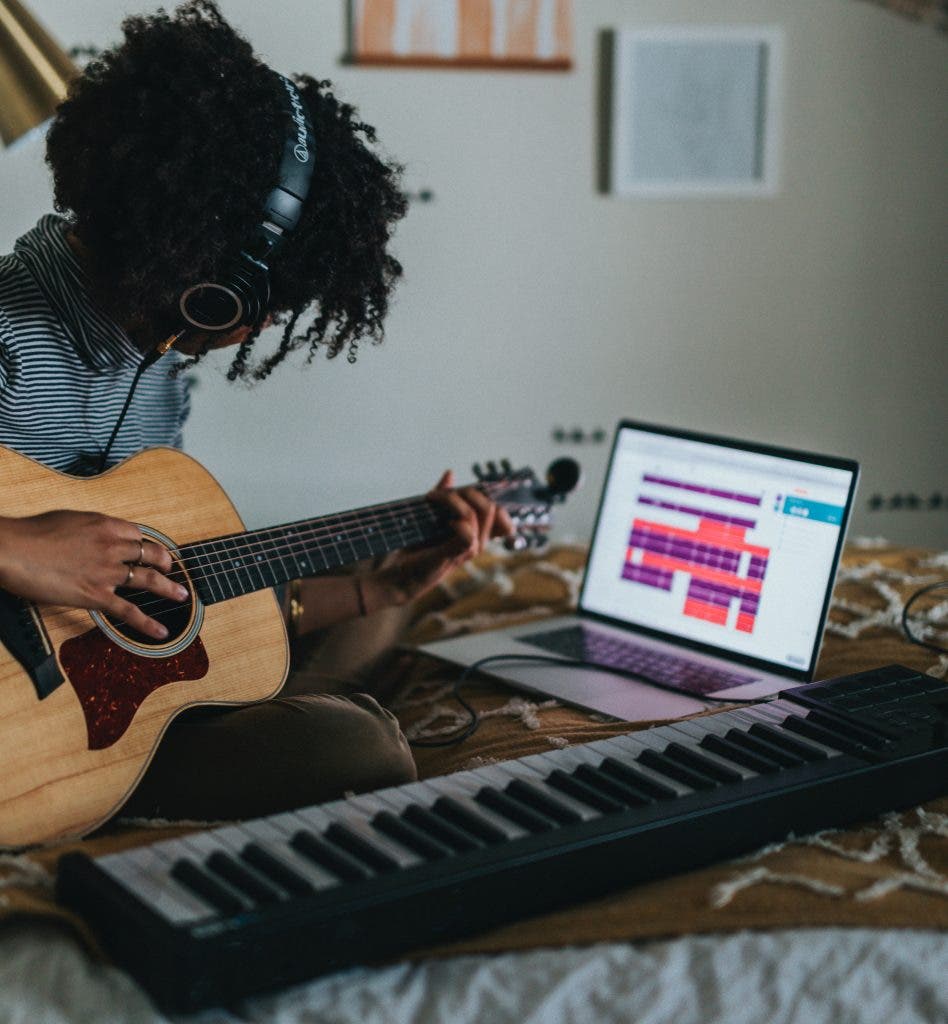
Headphones
A pair of quality headphones is a crucial part of any studio. Whether you are working late, on the road, or need an alternative monitoring solution for mixing, good headphones will ensure you can always work and eliminate guessing during those final tweaks.
On-the-go musicians will appreciate the cable-free nature and solitude of the Sony WH-1000XM5 Wireless Closed-Back Over-Ear Noise Canceling Headphones. Eight microphones guarantee world-class noise cancellation and allow users to instantly switch from making beats to making phone calls.
Aspiring producers looking for an in-ear model should try the Shure SE215 Sound-Isolating In-Ear Stereo Earphones. Pound for pound, these industry-standard earphones beat everything in their price range.
When key mixing and sound decisions have to be made, you need true reference quality monitoring and the Sennheiser HD 660S2 delivers.
Microphones
If your music has vocals, or any acoustic instruments or amplifiers, you need quality microphones to capture their true sound. The primary factors to consider are polar pattern(s) and element design. Polar patterns describe the microphone’s directionality — how it picks up and rejects sound. Some active microphones can achieve multiple polar patterns. Cardioid is most common and will work in almost all circumstances.
The most common designs for microphones are dynamic and condenser. Dynamic microphones need no external power supply, generally excel at louder sources, and are durable. Condenser microphones require a power source (some mics include this, others can receive power from your interface) and tend to be very sensitive and accurate in reproduction.
Arguably the most well-known microphone in the world, the Shure SM58-LC Vocal Microphone can handle anything you put it in front of, from vocals to kick drums. This durable, handheld dynamic workhorse is equally at home in the studio or on the stage.
The Audio-Technica AT4021 Small-Diaphragm Cardioid Condenser Microphone is perfect for stereo setups and capturing an accurate image of the entire sound field. Small-diaphragm condensers feature multiple voicings to shape the tone and feature an innovative laser pointer to guarantee perfect placement regardless of distance.
Every studio needs a large diaphragm condenser for killer vocal tracks. The Warm Audio WA-47 Large Diaphragm Tube Condenser Microphone features tube circuitry for a lush, luxurious sound. But that’s just part of what this microphone can do! With nine switchable polar patterns, users can ensure they pick up only the sounds they wish to record.
Lastly, don’t forget a microphone stand. If you are short on space, the H&A Compact Tripod Tabletop Microphone Stand is an excellent choice.
Software
Regarding software, the options are as varied as the genres of music used to make them! Users generally want a digital audio workstation (DAW) that allows recording, editing, and mixing audio tracks. Some work better for writing, MIDI instruments, and beat-making, such as Ableton Live or FL Studio.
In contrast, others like Pro Tools or Studio One excel at recording and mixing. Ultimately, you can create the music you want in any DAW, so this does come down to personal choice.
Considerations are your OS (not all DAWs are available for both Mac and PC), the software currently being used by your partners or bandmates, and your preferred workflow.

Mixing Console
While not necessary for all musicians, a mixing console can make live performances and rehearsals much easier. However, their overall purpose is splitting, routing, and combining audio signals, so users in the studio shouldn’t discount them for sub-mixing various elements. With a dedicated mixing console, musicians can control their sound and simplify the show by offering just a pair of outputs to the sound engineer.
Smaller setups and ensembles that need simple signal flow will find the Mackie Mix12FX 12-Channel Compact Mixer meets all of their needs. Its small size and built-in effects processors make it perfect for travelers.
Budget-conscious bands that need more channels will adore the Behringer Xenyx QX1832USB Premium 18-Input 3/2-Bus Mixer. Simple compressors and musical equalization on each channel help achieve full, professional-sounding mixes in no time.
The Tascam Model 12 Integrated Production Suite Mixer/Recorder/USB Interface is ideal for users who blur the line between performance and recording. This all-in-one box allows for live mixing, direct-to-hard disk multitrack recording, and the ability to route signals into your DAW via USB.
Tuner
Tuners are the secret superhero of the musician’s world. If you play any stringed instrument, a tuner is an everyday necessity. Tuning by ear is useful, but a tuner can be a lifesaver in a loud environment or in the studio where absolute consistency matters.
For acoustic instruments, the Fender Aluminum Bullet Tuner is ideal. It’s lightweight, durable, and picks up the instrument’s vibrations, allowing use even in louder environments.
Users looking to stay in tune and on time should check out the Korg KDM-3 Digital Metronome. With multiple beat patterns, sounds, and tuning modes, it’s an excellent solution to help players at home.
The TC Electronic Polytune 3 Polyphonic Tuner Pedal is perfect for guitarists and bassists, especially those who gig frequently. The unique polyphonic capabilities save time and get you in tune much more quickly. The smaller size makes adding it to any pedalboard or gig bag easy.
Amps

Guitarists and bassists (and sometimes keyboardists) need an amplifier. Essential for rehearsals but also a key part of any musician’s tone, the amp is a fundamental part of any rig. Most musicians have more than one! There are many options when looking at amps, including topology (the amp type – Tube or Solid State), wattage, speaker size, number of channels, and included effects.
Newer electric guitarists may prefer an all-in-one solution to get started, and the Blackstar ID:Core V3 20W Stereo Digital Modeling Amplifier is a great example. The modeling technology emulates multiple popular amp sounds for any style of music.
The Marshall DSL5CR 2-Channel 5W Valve Combo Amplifier with 1x 10″ Celestion Ten-30 Speaker (Reverb) is the archetype of the tube amp but in a small package, ideal for practice and low-volume gigs. Experience the joy of a cranked tube amp without getting evicted!
When it’s time to step up to something larger, the Vox AC15C1 15W Guitar Combo Amplifier is exactly what you need. Equipped with two channels for tonal flexibility and a master volume to give total control of tone and volume, this classic sounds great when paired with pedals or on its own.
If you are playing bass or keyboards, you’ll need something with a little more juice, like the Orange Crush Bass 50 50W 12″ Bass Guitar Amplifier and Speaker Combo. The built-in tuner and expansive tone-shaping capabilities make it an excellent choice for almost any gig.
FAQs
What is a student instrument?
Student instruments are basically instruments made for beginners. They’re typically more affordable and a bit more durable, to allow beginners to start learning musical instruments without breaking the bank.
What are good music accessories gifts?
Headphones, microphones, and amplifiers are great if your music-enthusiast friend is just starting out. As they venture further, you might want to consider gifting them music software subscriptions, mixing consoles, and monitors.
Why are accessories necessary for electric instruments?
Instrument accessories like amps and cables help student musicians get the best sound and make playing easier and more versatile.
What is the meaning of accessory equipment?
Accessory equipment are extra tools and gadgets that help enhance the main instrumental gear.
Conclusion
The process of building your rig or studio is an ever-evolving endeavor. Your tastes, living quarters, and gig size may change over the years. The main idea is to get started and keep working. Get what tools you need to begin, and you can always expand or upgrade at a later date. Most importantly…have fun!
Adorama also offers Students GearUP, an exclusive discount program for college students to help you get the gear you need for your studies, creative passion, and everything in between. Check out the Students GearUp page to learn more.

Whether you are a student just starting your musical journey or a life-long player looking to expand your palette, this fall’s back-to-school gift guide of musical instruments for students has the best options to help you along.
